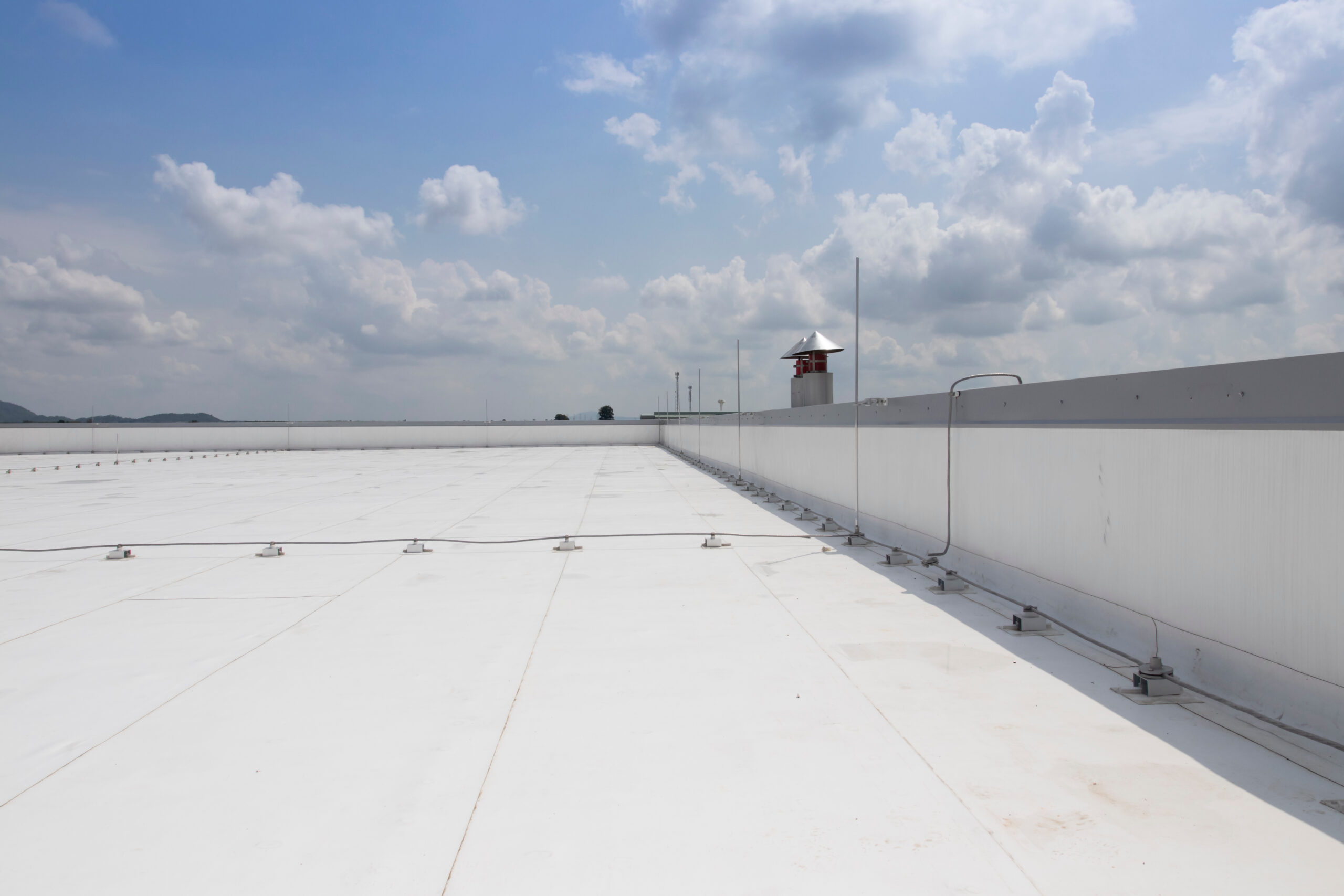PVC Roofing

Durable Roofing Solutions for Commercial and Industrial Projects
PVC roofing has been a trusted choice for commercial and industrial roofing projects for over 60 years. Known for its durability, resistance to severe weather, and long-term cost savings, PVC roofing provides an ideal solution for low-slope and flat roofs. Whether your property has sustained hail or wind damage or needs a new installation, PVC roofing offers one of the most reliable and cost-effective solutions for lasting protection.
Long-Lasting Benefits of PVC Roofing
A well-installed PVC roofing system can last for decades, making it a valuable investment for property owners seeking a long-term roofing solution. One of its most significant advantages is its resistance to environmental factors like UV exposure, high heat, and extreme storms. These properties ensure maximum protection for your building. Additionally, it is heat-welded at the seams, creating a watertight seal that prevents leaks, especially important for areas prone to heavy rainfall or frequent weather fluctuations.
Cost-Effective and Efficient Commercial Roofing
For commercial properties, PVC roofing is not only efficient but also cost-effective. Its lightweight design allows for easier installation, which helps minimize labor costs. Furthermore, the reflective properties of this roofing material help reduce heat absorption, making buildings more energy-efficient. Over time, these features contribute to lower utility expenses, which is particularly beneficial for large-scale commercial properties.
Resilient for Industrial Facilities
PVC roofing stands out due to its high resistance to chemicals, making it an excellent choice for industrial facilities exposed to harsh substances. Additionally, it is fully recyclable, supporting sustainability efforts while offering an environmentally friendly roofing solution. This makes it top choice for industrial buildings that require a durable, long-lasting roofing system.
Why Choose S&S Roofing & Construction for PVC Roofing?
At S&S Roofing & Construction, we work with leading manufacturers like Owens Corning, GAF, Firestone, Mule-Hide, Versico, and others to provide top-quality PVC roofing systems. As a certified PVC roofing contractor, we offer warranties of up to 30 years, ensuring long-term reliability and peace of mind for property owners.
Choosing the right contractor for PVC roofing is crucial, particularly when dealing with hail or wind damage. Proper installation requires expertise in handling the material to maximize its performance. S&S Roofing & Construction is licensed, bonded, and insured, with extensive experience in commercial roofing projects across the country. Additionally, we assist with insurance claims, damage assessments, and emergency repairs to ensure a smooth and stress-free process.
Comprehensive Roofing and Restoration Services
Beyond PVC roofing, we provide a full range of roofing and restoration services, including emergency tarping, shrink wrap protection, storm damage restoration, permanent roof replacement, and interior restoration. With locations across the country, S&S Roofing & Construction is equipped to handle projects of any scale, ensuring quality solutions for all commercial roofing needs.

